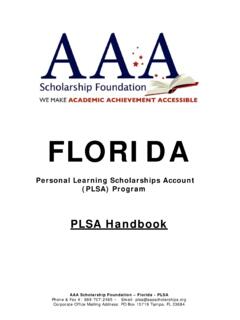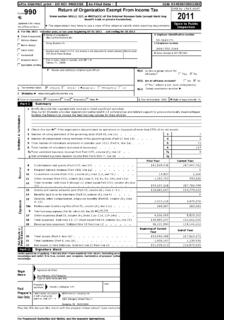Transcription of Name: English 9, Period Mrs. Krajewski - Canisius College
1 Packet created by Mrs. Krajewski using step Up to Writing manual. Name: _____ English 9, Period ___ Mrs. Krajewski Packet created by Sarah Krajewski using step Up to Writing manual. 2 Table of Contents Introduction to step Up to Writing: PARAGRAPHS ------- 3-5 Organization ---------------------------------------- --------------------- 6 Topic Sentences ---------------------------------------- --------------------- 10-19 What Is a Topic Sentence ---------------------------------------- ------------- 10 12 Ways to Create a Topic Sentence -------------------------------------- 10-17 Word Choice ---------------------------------------- -------------------- 17 Practice ---------------------------------------- ---------------------------- 18-19 Transitions ---------------------------------------- ---------------------------- 20-21 The E s (Examples, Evidence, and Explanation) ---------------------- 22 Conclusions ---------------------------------------- --------------------- 23 Introduction to step Up to Writing.
2 ESSAYS --------------- 24-25 Organization ---------------------------------------- --------------------- 26-30 Stretch Paragraphs Into Essays ---------------------------------------- ----- 26-28 12 Steps to Write an Accordion Essay -------------------------------------- 29-30 Thesis Statements and Introduction Paragraphs ---------------------- 31-35 What Is a Thesis Statement ---------------------------------------- ----- 31 Creating an Introduction Paragraph -------------------------------------- 31 Practice ---------------------------------------- ---------------------------- 32 The Blues ---------------------------------------- ---------------------------- 33-34 Organizing an Essay (Blocking Out) ----------------------------- 35 Transitional Topic Sentences ---------------------------------------- ----- 36-38 The E s (Examples, Evidence, and Explanation) ---------------------- 38 Conclusions ---------------------------------------- --------------------- 38 Outline ---------------------------------------- ---------------------------- 39-40 Packet created by Sarah Krajewski using step Up to Writing manual.
3 3 There are TWO main kinds of writing: narratives and expository pieces. Telling a Story Giving Information (Narrative) (Expository) Important Differences: Telling a Story Giving Information BEGINNING INTRODUCTION Setting Topic Sentence Characters Reasons/Details/Facts Plot Transitions Conflict MIDDLE BODY Elaboration Climax Closing/Clincher Resolution END CONCLUSION Two Kinds of Writing Packet created by Sarah Krajewski using step Up to Writing manual. 4 Below are two examples of writing. One is an expository piece and one is a narrative. Telling a Story A Narrative Giving Information - Explaining from A Shocker on Shock Street Spanish Explorers By R.
4 L. Stine After Christopher Columbus s Marty and I jumped to our feet. voyages to the New World, many Spaniards Ohhhhh. I heard Marty let came to this continent to explore. One out a frightened moan. Spanish explorer was Ponce de Leon. He I started to back away. I traveled through present-day Florida to find thought maybe I could scramble out the Fountain of Youth. A second explorer, the other side of the car. Coronado, searched for the Seven Cities of But the snarling, growling Gold. He and his men traveled for three monsters came at us from both sides. years. They did not find the cities of gold, L-leave us alone! I but they did find the villages of the Pueblo stammered. who lived in the Southwest. They also saw A monster covered in tangled the Grand Canyon.
5 A third explorer was brown fur opened his jaws to reveal Hernando De Soto. De Soto traveled long, jagged rows of yellow teeth. through Florida and then traveled west as His hot breath exploded in my face. far as the Mississippi River. He and his men were the first people from Spain to explore the Mississippi. These three men were only a few of the many people who explored the New World. _____ The difference between an introduction and the beginning of a story: An introduction is not at all like the beginning of a story. An introduction tells the reader what to expect and what information will be shared. The beginning of a story pulls the reader into the story; it does not always give the reader advance warning of what is to come. Packet created by Sarah Krajewski using step Up to Writing manual.
6 5 Elements of Expository Writing (These elements fit all types of essays.) Organization is the key. Topic sentences are the heart. Transitions are the glue for the key ideas. Examples, evidence, and explanations are the meat. Conclusions tie it all together. Packet created by Sarah Krajewski using step Up to Writing manual. 6 Organization: Do You Recognize the Difference? The following examples were written by middle school students . Examples 1a and 1b are responses to the book Tuck Everlasting. These examples illustrate the differences between writing that is organized and writing that has good ideas but no organization. Example 1a (Good ideas but no organization) Tuck Everlasting (seventh grade) Tuck Everlasting is mainly about life. What I mean about this is that the Tuck family fell off the wheel of life.
7 The Tuck family drank some water from a special spring that kept them living forever. During the story Tuck and Winnie had a talk about this. Winnie had been kidnapped by the Tucks and she could have lived with them forever. At the end of the book Winnie gives the frog the water. He then falls off the wheel of life. In conclusion, I thought the book was good and explained life very well. Example 1b (Good ideas and good organization) Life Is Good (seventh grade) When I read Tuck Everlasting by Natalie Babbitt, I was forced to think about life, death, and the possibility of living forever. First, I learned that life is a good thing, and I shouldn t spend time thinking about dying. I also realized that I wouldn t be really happy living forever. Life is like a wheel, and if I lived forever, I would see things change but I would not change.
8 Finally, I saw that death is not so bad. When a person dies, it s like the world is going a step further, moving on, and developing new things. Before I read this book, I was afraid to die, but now I believe it s not anything to be afraid of. _____ Organizing with Accordion Paragraphs Directions: Fold a piece of lined paper in an Accordion Fold. On each section of the paper, write a single sentence. (front) (back) 1. Topic Sentence 5. Explain 2. RDF 6. RDF 1. Fold paper in half. 3. Explain 7. Explain 2. Then fold paper in half 4. RDF 8. Conclusion again. Packet created by Sarah Krajewski using step Up to Writing manual. 7 How to Organize Writing Using Colors of a Traffic Signal GREEN Topic Sentence (go) - Green means go.
9 - Green asks the writer to decide, What am I going to prove? What am I going to explain? What information will I share? YELLOW Reasons/Details/Facts (RDFs) (slow down) - Yellow means slow down. - Yellow identifies key ideas reasons, details or facts. - Yellow introduces key concepts reasons, details or facts. RED Explain (stop) - Red means stop and explain the Yellows. - Red presents evidence to prove the Yellows. - Red provides explanations and examples. GREEN Conclusion (go back) - Green means go back to your topic. - Green means restate the topic and the position. - Do NOT introduce new information. - Use synonyms (words that mean the same thing) and leave your reader with something to remember. Packet created by Sarah Krajewski using step Up to Writing manual.
10 8 Organization Game Cut up the squares below and organize them correctly. *One square will be the theme. jelly juice lunch dessert potato chips ice cream dinner corn on the cob pancakes popsicle toast apple syrup cereal meals cookies cake oatmeal gravy green beans grilled chicken pizza breakfast salad applesauce sandwich french toast mashed potatoes banana bread milk Packet created by Sarah Krajewski using step Up to Writing manual. 9 Accordion Paragraphs Accordion Paragraphs can be any length (up to 14 sentences) and any combination of colors. Two, three or four yellows may be used. NOTE: There can ALWAYS be more than one RED after each YELLOW. 8 SENTENCE PARAGRAPH Topic Sentence (Green) Reason/Detail/Fact (Yellow) Explain (Red) Reason/Detail/Fact (Yellow) Explain (Red) Reason/Detail/Fact (Yellow) Explain (Red) Conclusion (Green) 7 SENTENCE PARAGRAPH Topic Sentence (Green) Reason/Detail/Fact (Yellow) Explain (Red) Reason/Detail/Fact (Yellow) Explain (Red) Explain (Red) Conclusion (Green) 6 SENTENCE PARAGRAPH Topic Sentence (Green) Reason/Detail/Fact (Yellow) Explain (Red) Reason/Detail/Fact (Yellow) Explain (Red) Conclusion (Green) Packet created by Sarah Krajewski using step Up to Writing manual.











